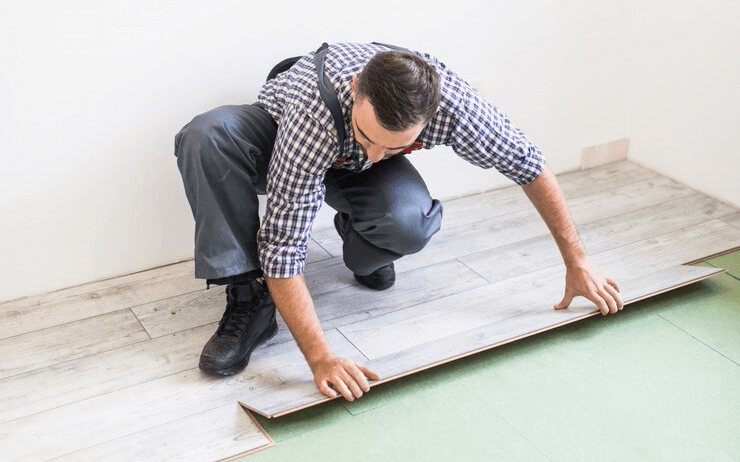The latest advancements in luxury vinyl flooring include Wood Plastic Composite (WPC) and Stone Plastic Composite (SPC) floors, often promoted as waterproof options with rigid cores. Despite their waterproof characteristics, both types of rigid-core flooring necessitate thorough moisture testing of the substrate and underlayment before installation.
Here are key considerations and steps to take before and during the installation of waterproof flooring:
- Moisture Testing: Before installing waterproof flooring, conduct moisture testing on the substrates and underlayment. This includes both visual evaluations and actual moisture tests. Be sure to follow the product labels and manufacturer guidelines meticulously.
- Substrate Preparation: Substrate preparation is a critical stage in any flooring installation. Evaluate the condition of the workspace and the substrate surface. For a wood substrate, sand and fill the surface as needed. If a self-leveling underlayment is required, ensure proper coating with a primer and, if needed, a mesh to secure the self-leveler. Always follow the manufacturer’s guidelines, and avoid installing over an existing finished wood floor.
- Surface Flatness: Achieving acceptable surface flatness is essential. Each manufacturer will have specific criteria for flatness approval, such as 1/8“ in 10’ or 3/16” in 10’. Planks are not designed to span depressions, and failure to adhere to flatness specifications can result in damage to click systems and failures in glue-down applications.
- Concrete Surface Grinding: When dealing with concrete substrates, grinding the surface to a CP2 or 3 profile is standard. This prepares the concrete to absorb moisture barriers and any cement patch used during installation. Consider product acclimation under an HVAC operating system for a minimum of two to three days, even if not explicitly required by the manufacturer.
- Installation Guidelines: Follow manufacturer guidelines meticulously during installation. Start in a straight line, square off a start wall, and maintain the proper distance between end plank seams. Avoid layouts resulting in negative effects on floor integrity, such as “H” plank seams or step patterns.
- Expansion Space: Ensure continuous expansion space around the perimeter, and keep planks equal in line along the vertical. Failure to do so can lead to negative issues within a row.
- Transitions: Use caution when installing transitions. End moldings are required for expansion space, and expansion T moldings may be necessary at specific junctures. Avoid gluing or nailing moldings on top of or through planks, as this can restrict movement and cause problems.
- Cupping and Doming: Be aware of physical changes in the flooring, such as cupping or doming. These changes can be influenced by HVAC conditions, ambient interior conditions, and the manufacturing process. Follow manufacturer guidelines and contact the manufacturer if site issues arise, keeping detailed records and photographs of the installation process.
Meticulous adherence to manufacturer guidelines, thorough moisture testing, and proper substrate preparation are essential for a successful installation of waterproof luxury vinyl flooring, particularly WPC and SPC floors with rigid cores.
Looking for high-quality Flooring Installation supplies? We’ve got you covered! Explore our range of products here to make your installation process seamless.
Attribution: This content is based on information from ProInstaller Magazine.



